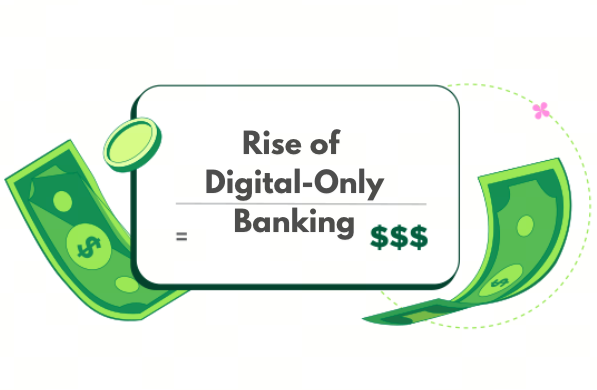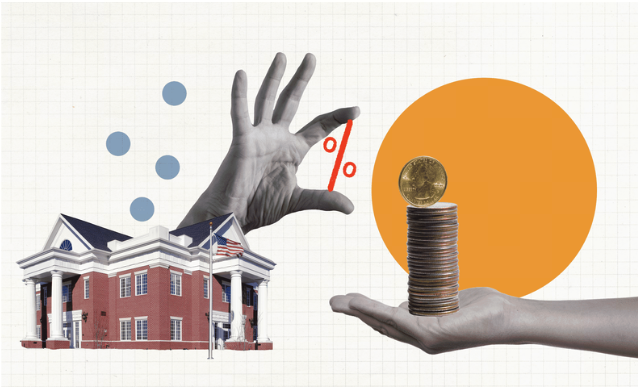
As we look toward 2025, the landscape of personal finance in the USA is undergoing a monumental shift, largely driven by the rise of **online banks**. These digital financial institutions are redefining how consumers manage their money, offering unparalleled convenience, lower fees, and innovative features that traditional banks struggle to match. In this article, we will explore how online banks are revolutionizing personal finance and what this means for consumers moving forward.
Online banks have gained significant traction over the past decade, largely due to advancements in technology and changing consumer preferences. With the ability to conduct banking transactions via smartphones and computers, customers are no longer tethered to physical branches. According to a recent survey, over 50% of Americans are now comfortable managing their finances exclusively online, indicating a significant shift in consumer behavior.
One of the most appealing aspects of **online banking** is the reduction in fees and the competitive interest rates they offer. Traditional banks often impose various fees for account maintenance, overdrafts, and ATM usage. In contrast, many online banks operate with lower overhead costs, allowing them to pass these savings onto customers. For example, a typical online savings account may offer interest rates of 1.5% or higher, while traditional banks often hover around 0.1% or less.
This dramatic difference in rates can lead to substantial savings over time. For instance, a customer with a $10,000 deposit in an online savings account could earn $150 in interest after one year, compared to just $10 with a traditional bank. This shift is encouraging consumers to rethink their banking choices and maximize their savings potential.
Online banks are also focused on improving the **user experience**. With intuitive mobile apps and websites, customers can easily navigate their accounts, transfer funds, and make payments with just a few taps. Many online banks also provide personalized features, such as budgeting tools and spending analytics, helping users gain better control over their finances.
Furthermore, online banks are increasingly utilizing artificial intelligence (AI) to enhance customer service. Chatbots and virtual assistants are now commonplace, providing instant support and guidance around the clock. This level of accessibility is something that traditional banks often struggle to provide, particularly during non-business hours.
As with any financial service, security is a paramount concern. Online banks utilize sophisticated encryption technologies and multi-factor authentication to protect customer information. According to a recent study, more than 70% of consumers feel confident that their data is secure with online banks, which is critical for building trust.
Moreover, online banks are often insured by the **Federal Deposit Insurance Corporation (FDIC)**, just like their traditional counterparts. This insurance protects deposits up to $250,000, providing peace of mind to customers. As consumers become more educated about digital security and the protective measures in place, their willingness to trust online banks continues to grow.
Online banks are also playing a crucial role in promoting financial inclusion. Many individuals, particularly those from underserved communities, may not have easy access to traditional banking services. Online banks often have fewer barriers to entry, allowing customers to open accounts with little to no minimum balance requirements.
Additionally, many online banks are embracing alternative credit scoring models that consider a wider array of financial behaviors, making it easier for individuals with thin credit files to access loans and credit products. This democratization of financial services is essential for empowering individuals and fostering economic growth.
As we approach 2025, the impact of online banks on personal finance will likely continue to expand. We can expect to see even more innovative features, such as integrated investment options, cryptocurrency services, and personalized financial planning tools. The ongoing evolution of financial technology (fintech) is set to further enhance the capabilities of online banks, making them indispensable in the personal finance ecosystem.
In summary, online banks are revolutionizing personal finance in the USA by providing lower fees, competitive interest rates, enhanced user experiences, and improved security. Their commitment to financial inclusion is paving the way for a more equitable banking landscape. As more consumers embrace these digital institutions, the traditional banking model may need to adapt or risk becoming obsolete.
By 2025, the shift toward online banks will be undeniable, reshaping how Americans manage their finances. With their innovative approaches and consumer-centric strategies, online banks are not just an alternative but a formidable force in the future of personal finance.
Comparing Online Banks vs. Traditional Banks in the USA: What's Best for You in 2025?

Online Banks in the USA 2025: The Rise of Digital-Only Banking

Top 5 Online Banks in the USA 2025: Features and Benefits You Need to Know
Security Concerns: How Online Banks in the USA are Protecting Your Money in 2025

Best Online Banks of 2025 – Secure, Smart & Fee-Free

How CRM Software is Revolutionizing Small Business Management in the USA by 2025

Best Personal Injury Attorneys in the USA (2025)

Personal Injury Attorney: What to Expect in the USA in 2025